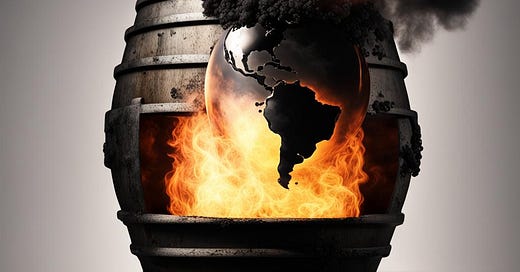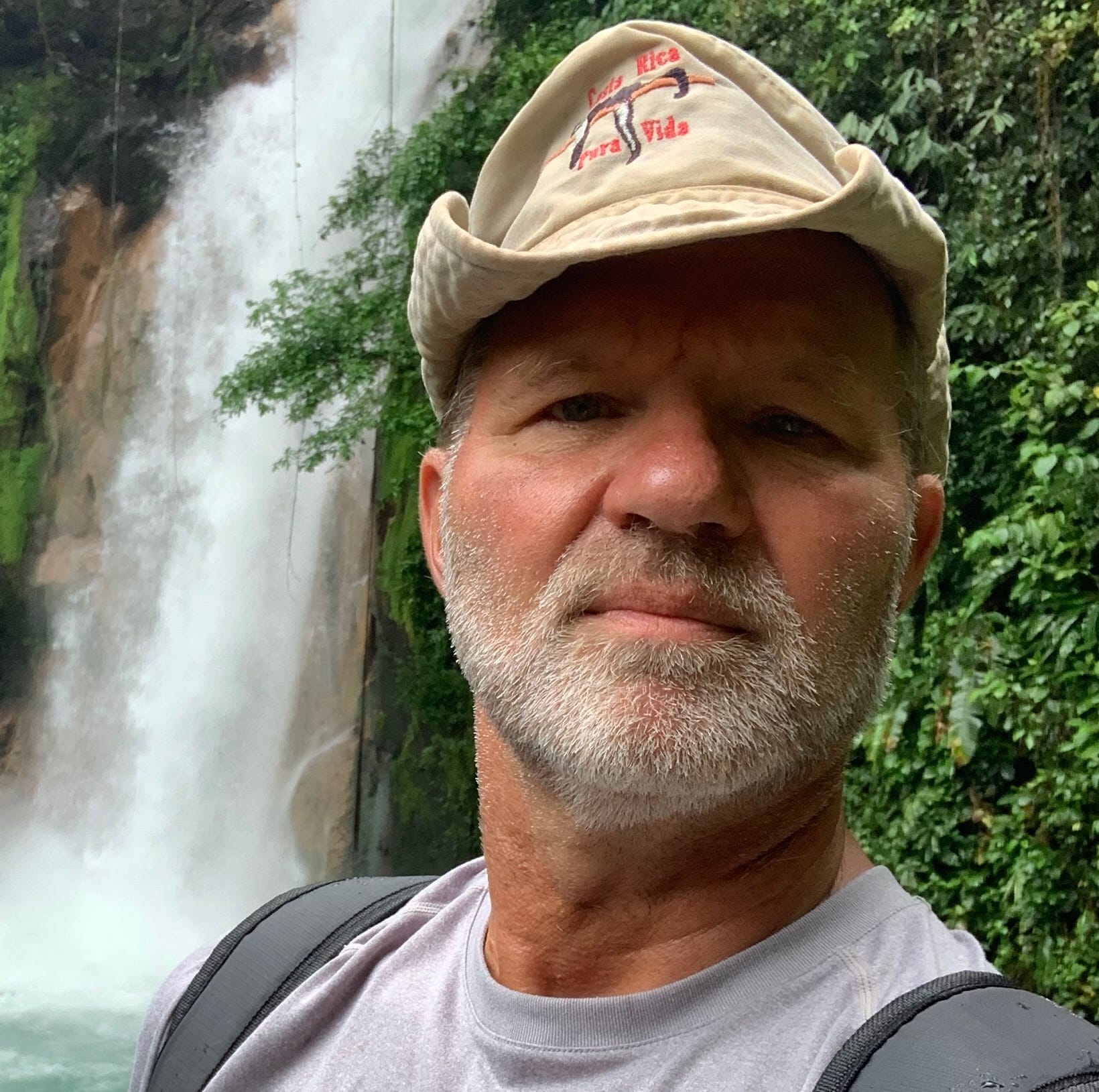20,010,000. Put another way, 20.01 million. That’s how many barrels of oil the United States consumes every day. Multiplied out to gallons, that equals 840.42-million gallons per day. 840,420,000 gallons per day. On an annual basis, that’s 7.3 billion barrels, which is 306.75 billion gallons every single year. More than 924 gallons for every man, woman and child in the nation. Now, add an additional 3,100 pounds of coal for every inhabitant of the country. The United States emits more than 5 trillion tons of CO2 every year. That volume of pollution is second only to China, which has more than four times as many people.
Is your head spinning yet? When it comes to energy production, The United States is filthy.
So, it was interesting to me when the State of Hawaii recently revisited a pledge to become “Coal free by ‘23”. They didn’t make it, but the state is aggressively heading in that direction, with the bulk of its renewable energy coming from solar farms, bolstered by new lithium ion battery storage systems.
It’s a great advancement for the tiny island state, but it pales in comparison to a small Central American country that has been a world leader in renewable energy generation for years, despite the fact that this accomplishment is ignored by every oil guzzling and coal crunching nation on the planet.
As I have mentioned before, and I’m sure I will again, I am a U.S. citizen who is also a legal resident of Costa Rica. This country is the world’s leader in renewable energy, that you have never heard about.
99.78% of electricity generated in Costa Rica comes from renewable energy sources. Virtually every watt of energy that powers this nation is generated without the use of oil and coal. In fact, it always has. There has never been a coal fired power plant here, and there never will be.
Costa Rican law has set a goal of being a completely carbon neutral nation - zero emmissions - by the year 2050, and we will get there ahead of the goal. The country ticks ever closer each day.
There’s nothing particularly unique about energy production here that skews the comparison with The United States. Yes, we do have a significant number of volcanoes, and the country has built a good many geothermal power plants around them. But the U.S. has many legitimate geothermal production sites as well. In fact, you could use geothermal to heat and cool your very home right now, no matter where you live. But you don’t. Yes, as a tropical nation just a few degrees North of the equator, we do get a lot of sunshine to bolster solar production. But, again, you can do that anywhere on the planet where the sun shines.
There is one large dam that supplies a good portion of electrical energy for Costa Rica, and dams have been getting a bad rap from environmentalists, as being not as green as we like to think they are. They have a point. However, this dam also stores the water used for consumption by the majority of Costa Rica’s residents. Some accommodations for sustaining human life will always be necessary. But, even here, Costa Rica recognizes the carbon footprint of the dam, and regularly plants many more acres of trees as an offset.
Costa Rica takes this carbon neutral stance even further. When a new geothermal power plant is built, or a new solar farm goes online, the carbon cost of building that facility is calculated, and a corresponding planting of trees to offset it happens. It’s hard to imagine this incredibly green nation getting even greener with the addition of more trees, but that’s what we do. Often, those trees are planted around the perimeter of the facility, so as you drive by a power generation station, you don’t even see it.
So what about transportation? Yes, there is no doubt that vehicles are the main, practically the only, source of carbon emissions in Costa Rica. Oil consumption for energy is confined solely to vehicles. Even here, the country has a plan. The cost, need for infrastructure like charging stations, rural nature of much of the nation, and early development hiccups for EV cars has led to their slow adoption. But is is happening at an ever quickening pace. EV’s are already as ubiquitous in San Jose, the nation’s capital and largest city, as in any U.S. city.
Modes of transportation other than personal cars are far more popular here than in The U.S. I can’t find any statistics for this, but based on my personal observations, I would venture to say that miles per person by bicycle, as opposed to private car, outstrip the U.S. by a very wide margin. So, too, for ridership in the country’s extensive system of buses, many of which are already electric. For me to drive round-trip from my beach town to San Jose in the center of the country, I would spend about $60 U.S. for the diesel to power my SUV. A bus ticket is about $9. That bus might use four or fives times as much fuel, but when you consider the forty or so other people on the bus, the carbon footprint is much smaller. If it’s an electric bus, given that our electricity generates no carbon, it is an environmentally free ride.
Then there is ride sharing. Forget Uber. An informal system of private cars, known colloquially as a “colectivo”, prowl the streets like cabs, stopping for anyone standing alongside the road. A single tank of gas in one of these cars might provide inexpensive rides for two-hundred or more people who use this method to get to work, and without the need for parking once they arrive.
Outnumbering cars on the roads and streets of Costa Rica are single-cylinder motorcycles and scooters, some getting as much as one-hundred miles per gallon. It doesn’t hamper the ability of Ticos (the nickname citizens use for themselves) to transport the things that they need. I regularly see motorcycles carrying ladders, surf boards, bags of cement, and even a full-sized charcoal grill.
Also, in Costa Rica - and here comes the Mother of all Transportation - we walk! I have measured the distance I cover on an average day by foot for a couple of years now. That 10,000 steps-a-day that you’ve been reading about, in articles telling you how much exercise you should do, is a joke. I routinely do two or three times as much walking. Let’s say you need a loaf of bread, a couple of beers for later, a jug of juice for the kids, and a carton of milk. The convenience store is four blocks from your house. What do you do? If you are an average U.S. citizen (I don’t use the term “American” because, here in Central America, we are Americans, too.), you get in the car and drive there. Sure, that trip only uses a pint of gas. No big deal, right? Now, multiply that by the 123.6 million households in the U.S., and you’re looking at well over 15,000 gallons of gasoline for a chore that would have taken you a few extra minutes and helped you burn a nice little pile of calories along the way. Instead, you get back in your car and burn more gas as you drive to the gym, where you pay a handsome sum of money for the privilege to stand on a treadmill and - oh, yeah - walk!
Here’s the other benefit of all that walking we do. Every single time I walk to the store, I run into at least one or two friends to exchange a few sentences with. Rather than blowing our horn and flipping off other drivers simply because their car is where we want ours to be, we stay happy, connected to our community, and we’re keeping healthy along the way. Because of the walking I do, I am healthier and happier today, than when I was fifteen years younger. All without making so much a carbon toeprint.
So, how did the U.S. end up being such a pathetic junkie of dirty energy? As a journalist, the very first thing you look into when trying to understand the source of a dilemna boils down to three words.
Follow. The. Money.
Oil is big business. BIG. MASSIVE. Sunshine, wind, wave, and geothermal sources are stunningly abundant, inexhaustible, and free. Yes, there is money to be made in the production of the facilities to capture these forms of energy, but that’s a small one-time sum compared to the continuous flow of cash that oil produces.
It really is as simple as that.
Where it gets complicated is at the political level. The oil companies love to throw big globs of that money at the politicians who make policy in the U.S., in order to keep them in line. It works. Oil money sullies energy policy at every level of government. In 2000, the U.S. Supreme Court stopped presidential vote counting in Florida and declared George W. Bush, an oil man, as President. Al Gore, an early proponent of renewable energy and other conservation measures, who also had half a million more votes, was tossed aside. I don’t think that was a coincidence. Imagine what a different world you would be living in if, 24 years ago, environmentalism had been chosen over “Drill, baby, drill”. U.S. energy consumption might look a lot more like Costa Rica’s on-the-way-to carbon neutral glidepath.
Do you think oil money isn’t really that large of an influence on U.S. politics? Think again. Koch Industries, based in Witchita, Kansas, is a major refiner, distributor and producer of fuels and other chemical compounds derived from oil. Generating $125 billion dollars a year, it is the second largest privately held company in the nation. It is large enough that the Koch family and its employees have their own political pact. In 2022, the Koch’s raised $3.74 million dollars to “donate” to politicians. Of all of that money, only $28-thousand dollars ended up in the hands of Democrats. That’s .75% of their money. 99.25% of Koch PAC money went to Republicans that year. So far, in 2024, Koch hasn’t given the Democrats a single penny.
That’s just one oil industry company. It isn’t even one of the major oil producers. Koch simply provides services to companies like Chevron, Shell, Exxon, BP, and the many other monsters in the industry. Add them all together, and just imagine how much money flows from that gas you pump into your car to Republican politicians who are owned by the oil industry. It’s easy to see why alternative energy sources have been so overlooked by the policy writers in Washington, D.C. It’s easy to see why the Supreme Court gave the presidency to an oil man in 2000. It’s easy to see why the U.S. lives on dirty energy.
I applaud Hawaii’s efforts to become “coal free” and to reduce its carbon footprint to zero within a couple of decades. At least one state in the nation gets it. But, as a resident of a nation that generates all of its electricity from renewable sources, and aims to be carbon neutral within a few years, I can only ask, “What took you so long, and when will the other 49 states get the message?”




